Bendable LEDs, an advancement of Light Emitting Diodes, pave the way towards more flexible lighting options in any space. Artificial lighting has come a long way since simple candles made of beeswax. Now we have neon lights, incandescent light bulbs, and of course the light emitting diode. Additionally, we have made innovations with these forms of lighting from chandeliers and fireplaces to lamps and even screens. One such innovation is the aforementioned idea of a bendable LED. In this article we will discuss LEDs, what they are, and what bendable LEDs bring to the table. To begin we will explore LED lighting and LED strips so we may also discuss the truly bendable LED: the OLED (Organic Light Emitting Diode)
What are LEDs
LED’s, and by extension bendable LEDs, are light emitting diodes. Simply put they are semi-conductive resistors that glow and only permit electrical current to flow in a single direction. For typical LEDs, mixtures containing Aluminum-gallium-arsenide (AlGaAs) produce the needed N-type and P-type materials. The difference between the two semi-conductive materials is that the N-type has extra negatively charged particles and P-type has extra positively charged particles.
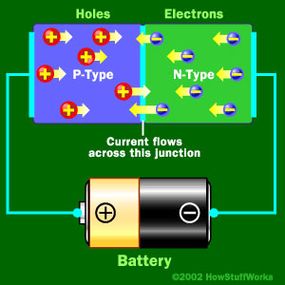
Example junction between P-type and N-type materials. Image courtesy of HowStuffWorks.com.
The movement of electrons in the P-type material emits light as current flows through it. More specifically, when electrons and holes recombine, the excited atoms undergo energy transition into lower states, releasing photons in the process. Peculiarly to LEDs, most of the generated light travels through the outer bulb in a particular direction.
Due to a price drop in the manufacturing of light emitting diodes after the year 2000, LEDs became a much more cost-effective lighting option. As a result, we now see this technology everywhere in most modern spaces. LEDs have an extensive range of uses in the modern day, spanning from simple lighting solutions to essential components in display technologies.
There is an abundance of information on LEDs on internet and the interested readers might want to enrich their knowledge by reading these resources. We have a few relevant posts here on our blog as well. You might want to read them after you finish this article:
- How LEDs Revolutionized the World
- Using LEDs to Test G-Force Tolerance in Air Force Pilots
- LED Based Insect Traps
In Quest of Bendable Light Sources
LEDs can be very small, give off relatively little heat, and only require electrical current to produce light. Bendable LED strips contain all the previously mentioned qualities since it is a string of LEDs. Fortunately, malleable PCBs which containing the ability to bend over at least along one axis both exist and are readily available within the market. This fact makes the creation of this lighting option simple and viable in the market today.
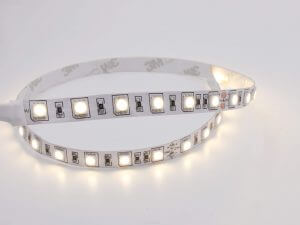
Example of bendable PCB with LEDs. image courtesy of LEDsmagazine.com.
The technology is an innovation from the Christmas lights of the past. There are notable differences between modern bendable LED light strips and earlier technologies. These differences include LED sizes being small enough to create smooth continuous lights in smaller strips. See the image below for an example of this kind of lighting.

Strip of small LEDs used to make smooth light. Image courtesy of WaveFormLighting.com
However, these strips alongside arrays of LEDs are not truly bendable as the LED itself in these constructions do not bend. LEDs on bendable PCBs do have the ability to have bendable lighting options but in this article we aim to touch on the technology of truly bendable LEDs.
OLEDs are Truly Bendable LEDs
Finally we arrive at the topic of truly bendable LEDs. Organic light emitting diodes (OLEDs) are a technology which produce light using organic molecules. These bendable LEDs come together to form what many believe to be the world’s best screens. Contrasting the LED strips mentioned prior in this article, OLED use layers of film to make diodes which overcome the restriction of having a rigid flat structure. Furthermore this technology is already on the market in the form of high quality TVs and monitors.

General structure of OLED screen. Image courtesy of Ossila.com.
Bent formations which previously would not have been possible become feasible because of the structure of OLED displays. Consequently, due to this structure the technology is best used for surfaces, hence why OLEDs are never seen used on a standard PCBs in the same way rigid LEDs are.

Example of flexible OLED display which is set at previously impossible screen deformations. Image courtesy of Ossila.com.
These displays open the door to creating foldable screens and technology. Additionally there is the possibility that this type of screen possesses the ability to stretch or compress. Such a property makes future developments in OLED certainly something to keep tabs on.

Foldable OLED screen prototype. Image courtesy of Ossila.com.
The Advantage of Bendable LEDs
Now that we know that bendable LEDs can craft bent monitors and foldable screens we must discuss the advantages. To begin we will consider how a bent screen differs from a flat screen. Bent screens have less distortions compared to a flat screen due to simple light projection physics. A flat screen will project an image forward, normal to the screen. On the other hand, bent screens take advantage of their geometry and project the entire image to the viewer, allowing for a larger optimum FOV.
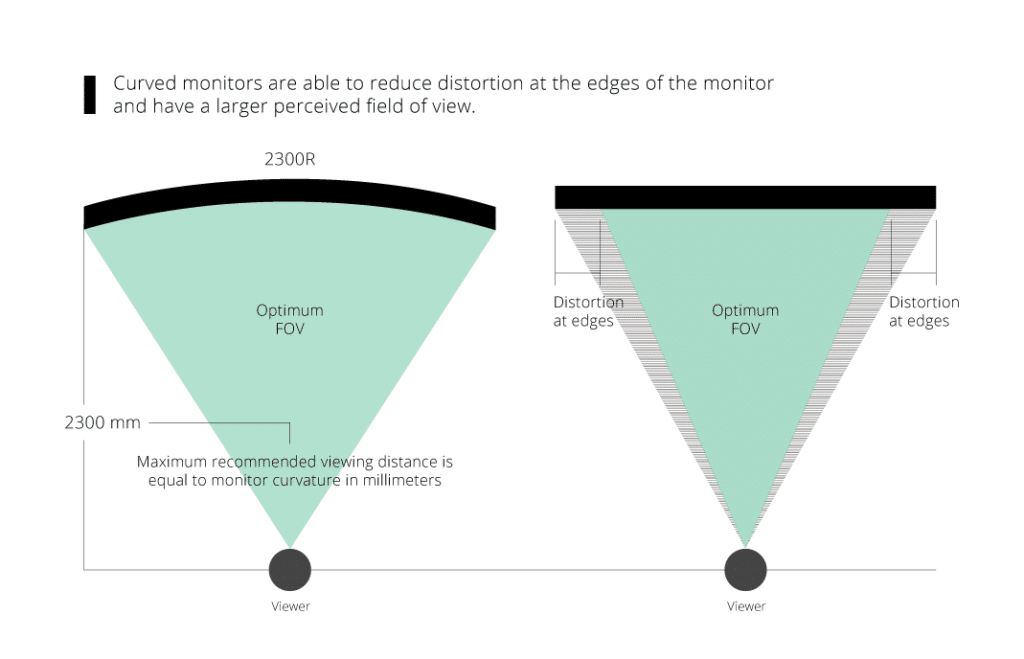
Demonstration of curved vs. flat screen in relation to distortion and optimum FOV. Image courtesy of Viewsonic.com
Moving on from bent screens, foldable phones/screens hold an advantage you may appreciate in your daily life: compactability of smart devices. An incredibly apparent advantage to foldable screens means our smartphones can still have their large screens while remaining compact enough to fit in your pocket. Truly bendable LEDs make this incredible feature possible. It is fact that OLED developments make this possible that should inspire interest in the next innovation for OLEDs.
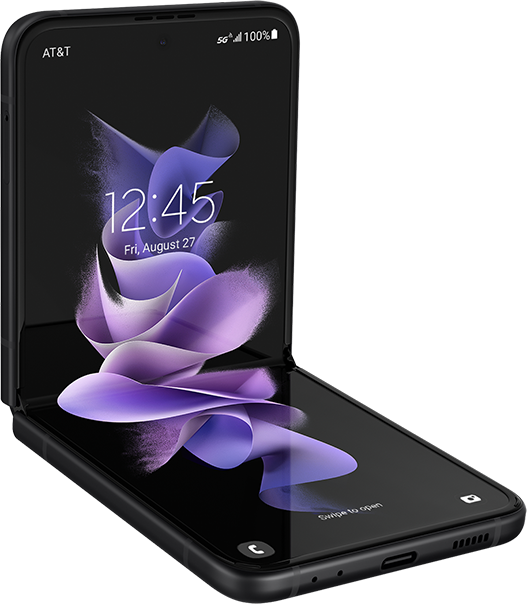
Foldable smartphone currently on the market. Image courtesy of att.com
Conclusion
In conclusion, Because of all the advancements in bendable LED technology we now have an innovative lighting option which is more versatile than any other mentioned lighting method. The future of truly bendable LEDs appears to lie in the advancement of OLED technology. We have already seen applications of bendable LEDs in light strips and foldable/bent screens. As far as lighting options go, the low heat emissions of LEDs means potentially safer lighting solutions which do not get hot. Bendable LEDs, OLEDs, and future innovations could pave the way to future malleable screens and technology previously only thought to be possible in science fiction.
This article is brought to you by RPMC Lasers Inc., a leading supplier of laser technologies in North America.
For further readings consider looking at the resources used in this article:
- Basic LED information
- LED strip making
- LED ring light for high speed cameras
- Basics of OLED technology
- LED strip lights general information
- Benefits of bent screens
Did You Know?
LEDs can be made in many different ways and come virtually every color (this includes infrared and ultraviolet). Compared to incandescent light bulbs, a similar output LED bulb uses around 14% of the power an incandescent bulb would. These simple benefits give a lot of room for innovative applications of LEDs, especially in places where other lighting options would not be viable.
One interesting use of LEDs is their use for high speed cameras which require very high shutter speed and lighting for proper use. LEDs provide a very efficient way of producing such high levels of light. This is due to the luminal efficacy of LEDs. This kind of device would be far less efficient if it weren’t made with LEDs.
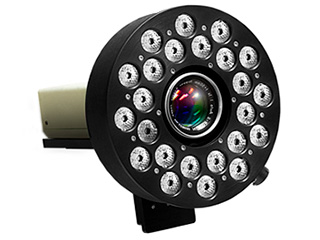
VIC 24 LED Ring Light Array for use in high speed cameras. Image courtesy of Findlight.com.
Did you like this article? If you did, please subscribe and share! You might also like our blog post on Circadian Lighting: Illuminating Solutions for Seasonal Depression.
